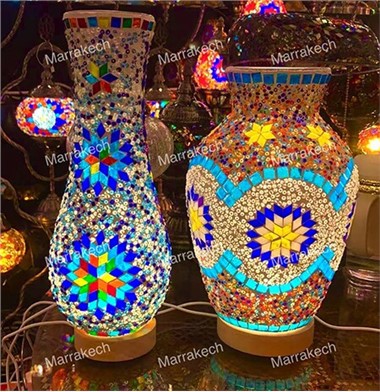Now children contact mobile phones, computers, television and other electronic equipment early, coupled with heavy academic work, their myopia problem is becoming more and more serious. Parents are paying more and more attention to the eyesight health of their children, so many parents begin to buy eye protection lamp for their children.
But do you know what an eye protection lamp is? What standard should eye protection table lamp meet? How to choose and identify the brand of eye protection lamp? Here I will share my personal views with you, hoping to help you.
1, What is eye protection table lamp
As the name suggests, the eye protection desk lamp should not only provide lighting, but also pay special attention to the protection of human eyes, so as not to cause additional damage to human eyes due to its lighting effect. Corresponding to the ordinary table lamp, it may only provide a basic lighting, no control over the lighting parameters and light quality.
Eye protection desk lamp
2, Standard for eye protection table lamp
The latest standard corresponding to eye protection table lamp is: national standard GB / T 9473-2017, which has clear requirements on fluctuation depth, illumination uniformity, Photobiological Safety, color rendering index, color temperature, etc.
Wave depth
Our household electricity is 220 V / 50 Hz AC, and all light sources working under AC power supply will have flicker (including incandescent lamp, fluorescent lamp, LED lamp). This kind of flicker with a certain frequency can be called stroboscopic. Stroboscopic light source will cause great harm to people's health. Now, it is clear that vision weakness, headache, and even epilepsy may occur.
Here, we also need to introduce a term - wave depth, which we use to evaluate stroboscopic. Definition of wave depth: the ratio of the difference between the maximum and minimum values of light output in a period and the sum of the maximum and minimum light output values, expressed as a percentage. The smaller the fluctuation depth, the better. The standard of wave depth can be divided into no significant effect and low risk, and its index is related to the flicker frequency.
Relationship between wave depth and scintillation frequency
Standard range of wave depth
Illumination uniformity
Illumination uniformity requires that the lamps should have shading, no excessive glare, and ensure that the illumination difference cannot be too large when it reaches the desktop. Glare means that people will not feel the direct and dazzling light of lamps and lanterns in normal sitting posture. Specific test methods and standards are also specified for glare.
There are special test methods and classification requirements for illumination uniformity (Grade AA is the best). Reading and learning in the scene of uniform illumination can effectively reduce the visual fatigue of human eyes (if the illumination is uneven, the eye needs to constantly adjust the pupil size to adapt to different brightness).






